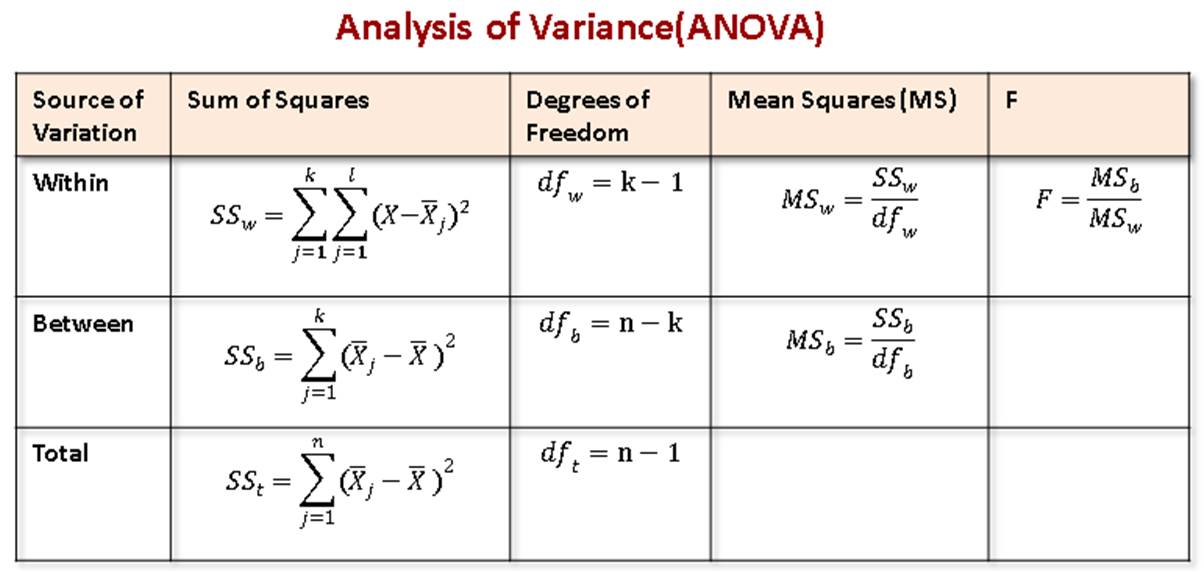


It’s unlike computing with one sample size where you take the sample size minus one. When it comes to getting degrees of freedom for two samples, the formula is quite different. To calculate the degrees of freedom through t-test you’ll need the following formula Let’s start: Degrees of freedom calculator t-test And in this step, we’ll look at the popular ones.

However, it’s an important point to note, that the formula you use relies on the statistical test you’re conducting. In this case, you’ll need to use its formula.
Anova degrees of dom calculator how to#
Now that you know what degrees of freedom are, the next step is how to find it. How to find degrees of freedom on a calculator And the same applies if you have more variables or less than what we’ve used as an example. As a result, you only end up with 2 degrees of freedom. That said, the value of y is:Īs you can tell from the above calculations, when you have three variables and you assign values for 2, the third loses the freedom of change. In another case, let’s say x =6, m = 12, this also makes the value of y obvious with no room for change. Therefore, you can’t go for any Mean you may prefer. X =4, y = 8, with this two, the mean is already determined. And when you have the values of two variables, it means the third variable has been determined. But why is that so? Well, it’s simple the values that can change are only 2. But when it comes to the degrees of freedom, you only have 2. When you look at this data set, you’ve got three variables. And when you calculate their mean, you get m as the answer. Let’s say you have two numbers, y, and x. So, for a better understanding, let’s have a look at a basic example:
Anova degrees of dom calculator free#
Or you can define degrees of freedom as the least number of free coordinates that can determine the phase space.įrom this point of view, degrees of freedom may sound theoretical but it’s not. Also, it refers to the number of ways a dynamic system can move independently without infringing the constraints forced on it. Now, not only are the F and p values different (which is bad enough, and I'd be happy on opinions which test to trust), but it also suggests a dof of 23.Degree Of Freedom Calculator Hypothesized Mean (µ):ĭegrees of freedom refer to the number of independent values that can vary in the final statistics calculation. I read here that aov may not always be trusted, so I also used ezANOVA to double-check my results: > ezANOVA(anova_data, dv=t, wid=participant, within=. The data set contains ALL measurements, not just averages per participant/condition. Which tells me the DOF of residuals is 479. However, if I run my calculations in R I get: > summary(aov(t ~ (cond_A * cond_B) + Error(participant/(cond_A * cond_B)), data=anova_data)) Which in my case would be 487 observations - (24 participants - 1) - (4 levels - 1) = 461.


 0 kommentar(er)
0 kommentar(er)
